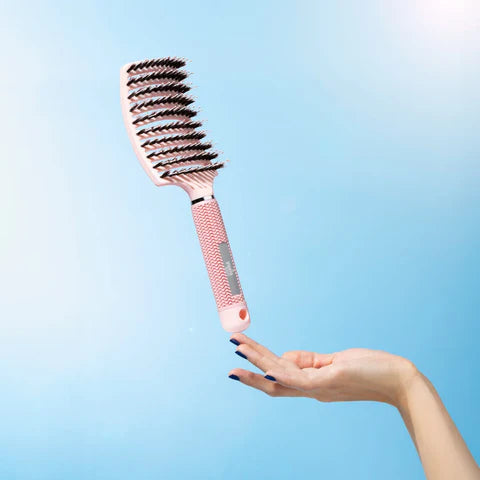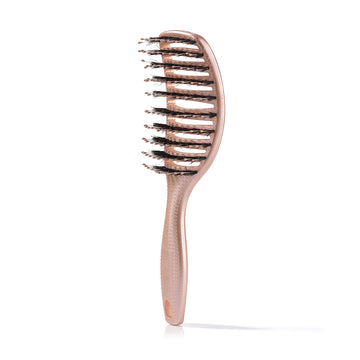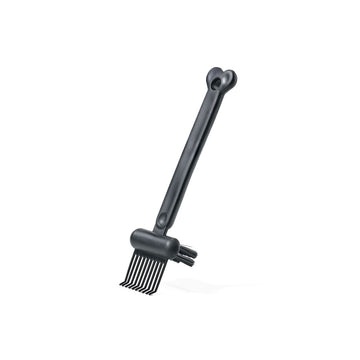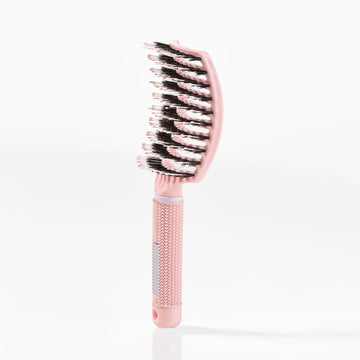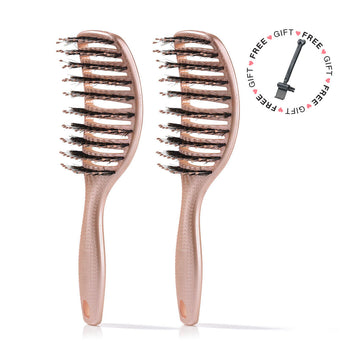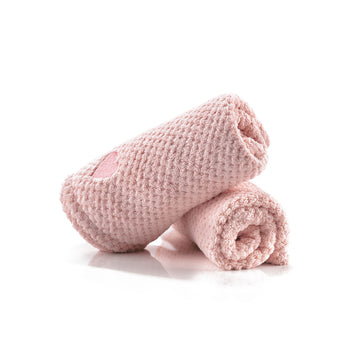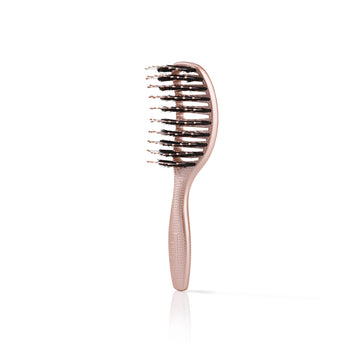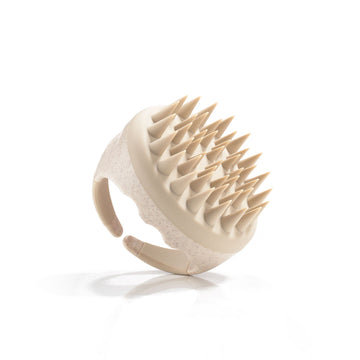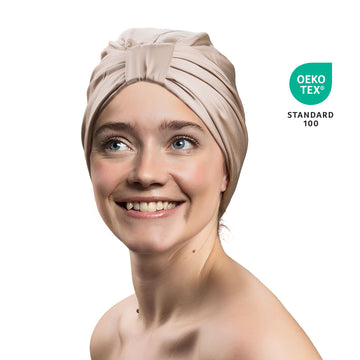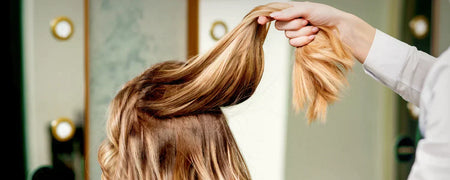
Understanding hair density: How many hairs do you normally have on your head?

by Nanna Bundgaard | 11. September 2023 | Reading time: 7 minutes
Read more about the authorHow many hairs do you normally have on your head? It's a question often asked by those concerned about hair loss or wanting to understand more about the natural cycle of hair. In this blog post we will explore the answer to this question and further information on hair growth, causes of hair loss and when it may be necessary to seek help. So read on to gain insight into all this and more!
Table of contents
What is normal?
Did you know that the average adult has between 100,000 and 150,000 hairs on their scalp?
The number of hairs on a person's head varies widely. On average, adult humans have about 100,000 to 150,000 hairs on their scalp. The hair follicles, which are responsible for hair growth, can produce a new hair for up to two years before it falls out naturally and is replaced by a new one.

Men or women
Differences in hair growth between men and women can be apparent. Men typically have more hair on their heads than women. On average, men have about 100,000 to 150,000 hairs, while women usually have about 80,000 to 100,000 hairs on their heads.
There are also differences in the number of hair follicles between men and women. Men generally have more hair follicles than women, which contributes to the greater number of hairs on their heads compared to women.
Does hair color affect the number of hairs?
Yes, there may be differences in the number of strands based on hair color. Generally speaking, people with blonde hair tend to have more strands compared to people with dark hair. This is because blonde hair is often thinner in diameter, allowing more strands to grow in the same area. On the other hand, people with dark hair tend to have thicker hair strands, resulting in fewer hairs on the head.
However, it is important to note that the number of hair strands varies individually and there can be considerable variation within each hair color category. Other factors, such as genetics and hormonal influences, can also play a role in the number of hairs a person has, regardless of hair color.
Scalp size
Influence of the size of the scalp on the amount of hair: The size of the scalp can have an effect on the number of hairs on the head. A larger scalp can accommodate more hair follicles, resulting in an increased amount of hair.
Ideal hair density based on scalp area: To calculate the ideal hair density based on scalp area, it is important to consider individual differences. Generally speaking, an area with 200-300 hair follicles per square centimeters as being normal for adults.
Variation in hair volume based on individual differences in scalp size: Individual differences in human scalp sizes contribute to the variation in the number of natural and healthy strands of hair. In other words, people with smaller or larger scalps will often have fewer or more natural straw hairs than average.
How does hair grow?
How many hairs do you normally have on your head?
It is natural to have between 100,000 and 150,000 hairs on your head. Hair grows in different phases, including a growth phase, resting phase and replacement phase. Over the course of a lifetime, we can experience loss of up to 100 hairs per day, but this is considered to be within the normal range.

Hair Growth Cycle
The anagen phase is the growth phase where the hair grows actively. This phase usually lasts for 2-6 years and about 85% of the hair on the head is in this phase at any one time. The catagen phase is the transitional phase between growth and rest. During this short period of approximately 1-2 weeks, the hair stops growing and begins to detach from the root. The telogen phase is the resting phase where the hair no longer grows or renews itself. During this period, approx. 10-15% of the hair on the head, and it can take up to three months for a new hair to start growing again after the end of the telogen phase.
Loss of hair
Hereditary hair loss can be one of the reasons why we lose hair. This is due to genes that can be passed on from previous generations. Alopecia areata is another factor that can cause hair loss. This condition is known to cause sudden patches or areas of baldness on the head. The effects of certain medications or treatments can also result in hair loss and must be considered.
Why do we lose hair?
There are several factors that can affect hair loss. Age is one of the most common causes of hair loss, as the number of hair strands naturally decreases over time. Genetics also play a role, as some people simply tend to have thinner or less hair. Hormonal changes can also contribute to hair loss, especially in women during pregnancy or menopause.
How many hairs do you normally have on your head? It varies from person to person, but on average an adult has around 100,000 to 150,000 hairs on their head. However, the number depends both on genetic factors and individual variation in the growth cycle of each follicle.
Age
Hair loss at a young age can be a concern for many, but it is actually quite normal. Many people experience hair loss or changes in hair thickness and quantity with age. But does this mean that hair volume has anything to do with age? Here are some key points to consider:
- Hair loss can occur early in life due to genetics or hormonal changes
- Hair thickness and amount can vary from person to person regardless of age
- Age plays a role in some types of hair loss, such as androgenetic alopecia
Therefore, there is no fixed answer to how much hair you normally have on your head, as it varies from individual to individual and can change over time. The best advice is always to consult a professional for additional information about your specific scenario.
Genetics
Heredity and Hair Volume - Genes can play a role in determining the number of hairs on one's head.
Can genes affect the number of hairs? - Yes, research suggests that certain genes can influence hair density in humans.
Are there differences in hair density between people based on genetics? - Yes, there are observed variations in hair density among individuals based on their genetic inheritance.
Hormonal changes
Menopause can have an impact on the amount of hair in women. Hormonal changes during this period can cause increased hair loss. These hormones can affect the amount of hair, and it is not uncommon to experience hair loss during menopause.
Find out more about causes of hair loss here.
How thick is the hair on our head?
The thickness of the hair on our head varies from person to person and it depends on various factors such as genetics, age and state of health. Generally speaking, the thickness of the hair can vary between 0.02 and 0.04 millimeters in diameter.
Human hair is made up of keratin, which is a protein produced in the hair follicles of the scalp. The keratin forms a hair fiber that grows out of the hair follicle and protrudes above the scalp.
The thickness of the hair can also be affected by various factors. For example, age can play a role, as hair tends to thin with age. Genetics also play an important role, as hair thickness often follows family patterns.
It is worth noting that the thickness of the hair can vary between different areas of the head. For example, hair is often thinner at the forehead and temples compared to the back and top of the head.
Get a 10% discount code sent to you
Receive the best tips and tricks for your hair from Lotte and Nanna 🥰

 2-4 day UK delivery
2-4 day UK delivery
 25.000+ satisfied customers
25.000+ satisfied customers
 Satisfaction Guarantee
Satisfaction Guarantee







